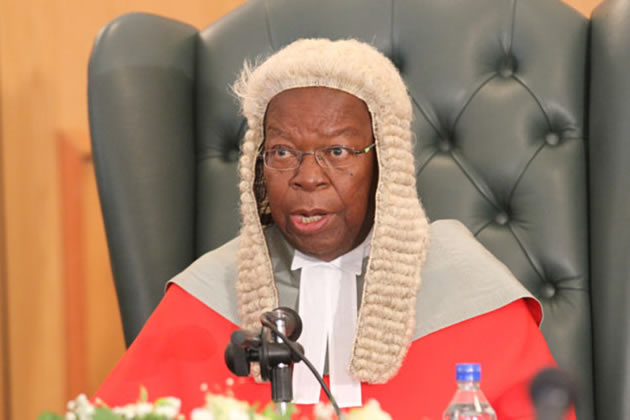Unpacking Supreme Court ruling on job termination

 Matthias Ruziwa HR Issues
Matthias Ruziwa HR Issues
The final court of appeal for Zimbabwe exercised its jurisdiction in interpreting the correct position of the law by material departure from numerous rulings that upheld the illegality of termination of a contract purely on notice and for no other cause.
This has brought finality to the question on whether or not termination is different and distinct from dismissal.
On February 4 2015, the Supreme Court heard Don Nyamande and Kingstone Donga’s appeal against a judge who made the following finding in the Labour Court of Zimbabwe, Harare, February 26 and March 28 2014;
“In my view therefore, the submission that Section 12B came to do away with the possibility of terminating a contract of employment on notice is a misunderstanding of the law as it stands.
“In any event, the provisions of Section 12(4) of the Act are clear and allow no ambiguity as also the provisions of Section 12B.
“None of the sections have the effect of doing away with the termination of a contract of employment on notice.” See Zuva Petroleum (Pvt) Ltd v Don Nyamande and Another LC / H /195 /14.
“In handing down the judgement No. SC 43/ 15 on July 17 2015, the Supreme Court’s Chief Justice Chidyausiku, remarked: “It would appear on the papers that the bone of contention between the parties is the legal status of the employer’s common law right to terminate an employment relationship on notice.
“Counsel are agreed that once upon a time, both the employer and the employee had a common law right to terminate an employment relationship on notice.
“The point of departure appears to be that the appellants, while acknowledging that the employer’s right once existed, argue that it has since been abolished. The respondent contends that the employer’s right has not been abolished and still subsists.”
It was contended for the appellants that Section 12B abolished the employer’s common law right to dismiss an employee on notice.
“The Supreme Court agreed with the Labour Court’s conclusion that neither Section 12B nor Section 12(4) of the Act abolished the employer’s right to terminate on notice. The 2002 amendments to the Labour Act brought the concept of unfair dismissal under Section 12B which stipulates that;
(1) Every employee has the right not to be unfairly dismissed.
(2) An employee is unfairly dismissed:
(a) If, subject to subsection (3), the employer fails to show that he dismissed the employee in terms of an employment code; or
(b) In the absence of an employment code, the employer shall comply with the model code made in terms of section 101(9).
(3) An employee is deemed to have been unfairly dismissed:
(a) If the employee terminated the contract of employment with or without notice because the employer deliberately made continued employment intolerable for the employee;
(b) If, on termination of an employment contract of fixed duration, the employee:
(i) Had a legitimate expectation of being re-engaged; and
(ii) another person was engaged instead of the employee.
The Chief Justice remarked that Section 12(4) of the Labour Act was the one that regulates the periods of notice including three months in the case of a contract without limit of time or a contract for a period of two years or more.
The Supreme Court then ruled that to that end, the Labour Court was correct in allowing Zuva Petroleum to terminate the appellants’ employment contracts on notice.
According to The Herald edition of last Saturday, workers described the judgment as one with earth-shattering implications for every employee in Zimbabwe.
In simple terms, it is labour’s view that any employee, regardless of the level of employment, could at any time be given three months’ notice that his or her employment has been terminated.
Furthermore, workers are also of the view that the judgment is removing negotiations on retrenchments and does have pressure on elements of the dispute settlement mechanisms.
On the other hand, business remarked that “the ruling brought natural justice to the labour market”.
This judgment came at time when business is crying for flexible labour laws in order to improve industrial competitiveness.
Most companies are fretting from economic challenges that include liquidity crunch, viability problems, and stiff competition from imports and are of the view that you cannot grow an economy by making it impossible to shed labour when necessary because you will be forced to liquidate.
Labour experts have said the judgment will seriously affect the balancing of the equation between the employer and employee in an exchange relationship.
By taking away job security, which is a key component of the intangible contributions given to employees in exchange for their loyalty and affective commitment, there is a definite lack of state of equilibrium that has been created.
Whereas a close analysis of the judgment shows that termination on notice is one of the recognised ways of terminating employment relationship, there seems to be a misunderstanding that employers can terminate contracts of employment on notice to the exclusion of other recognised ways of termination such as dismissal or retrenchment.
The Supreme Court simply said termination on notice is only but one of several lawful ways of termination in appropriate situations the other ways of termination being dismissal, retrenchment etc.
Termination on notice may apply in no fault situations, that is where there is no misconduct.
Accordingly, in cases of misconduct, disciplinary action will have to be taken in terms of Section 12B of the Labour Act. See Page 8 of the judgment and fifth paragraph on page 10 of the judgment.
Likewise, in cases of retrenchment the procedure laid down in s12C of the Labour Act will have to be followed. An employer cannot terminate on notice to avoid disciplinary or retrenchment procedures in terms of s12B or 12C respectively. That would be unlawful and subject to challenge.
While the employees in the above judgment were earmarked for retrenchment, their case was lost, in my view, because they alleged wrongful or unlawful dismissal. See the second paragraph on page two of the judgment. See also their grounds of appeal to the Supreme Court on page three of the judgment. The Chief Justice’s remarks on page nine of the judgment are also incisive:-
“Quite clearly the appellants’ case is predicated on the proposition that dismissal means all forms of termination of employment. Put differently, all terminations of employment are dismissals. This proposition is not tenable on the authority of the above cases. That proposition is clearly erroneous.”
Had they alleged failure to retrench them as provided for under s12C, as opposed to wrongful dismissal, the outcome may have been different.
They alleged wrongful dismissal and the court found that not only was there no wrongful dismissal but no dismissal at all and their case was lost.
The writer is grateful to note that the Government through the Ministry of Public Service Labour and Social Welfare is proactive in accommodating the reactions from stakeholders within the industrial relations system with regards to this latest judgement.
According to The Herald edition of Monday July 20 2015, Minister Prisca Mupfumira was quoted saying “there is definitely need to settle on corrective legal options to safeguard the worker as the ministry is already receiving numerous complaints from workers whose contracts of employment have been terminated on notice since the court ruling.
She insisted that there should be balance between the needs of the employee and the employer”.
In my view, the Supreme Court judgement has come at the right time when the country’s labour laws are being reviewed to be in harmony with the Constitution, ILO Conventions and ZIM-ASSET.
It is a hard fact that labour laws need to be amended to improve business and attract investors. Since 2013, Confederation of Zimbabwe Industries (CZI) has made it loud and clear that the current labour laws are skewed in favour of employees and are hampering business.
On the other hand, section 65 of the Constitution stipulates Labour Rights, which include the right to fair and safe labour practices, right to a fair and reasonable wage, right to engage in collective bargaining etc.
In terms of ZIM-ASSET targets, the country has clear targets on creation of employment opportunities.
The Supreme Court remarked, “That common law right in respect of both the employer and the employee can only be limited, or regulated by an Act of Parliament, or a Statutory Instrument that is clearly intra vires an Act of Parliament”.
I am confident here that the Government, labour and business can view this issue as an opportunity that has arisen at the right time when amendments are being made to the current Labour Act to balance the interests between workers and employers.
The economy needs to grow and the school of thought says “it is only when there is sound industrial relations where people can work together”.
We need fair labour practices that can help to grow the economy.
In conclusion I would like to draw your attention to the matter between NEHAWU v University of Cape Town and Others (2003) 24 ILJ 95 (cc) where the South African Constitutional Court held that; “fairness denotes a balance between competing interests of employees on hand and employers on the other hand”.
It is my humble view that the TNF, Legislators and the Cabinet will be able to strike a balance between the needs of workers and employers through stakeholder engagement and prompt development and implementation of corrective legal options.
- Matthias Ruziwa is an experienced and growing Strategic Human Resource Practitioner. He is also an independent arbitrator practicing in the Midlands Province, City of Kwekwe. Opinions expressed herein are solely those of the author. You can contact Matthias at the following email address: [email protected]/whatsapp 0773 470 368











Comments